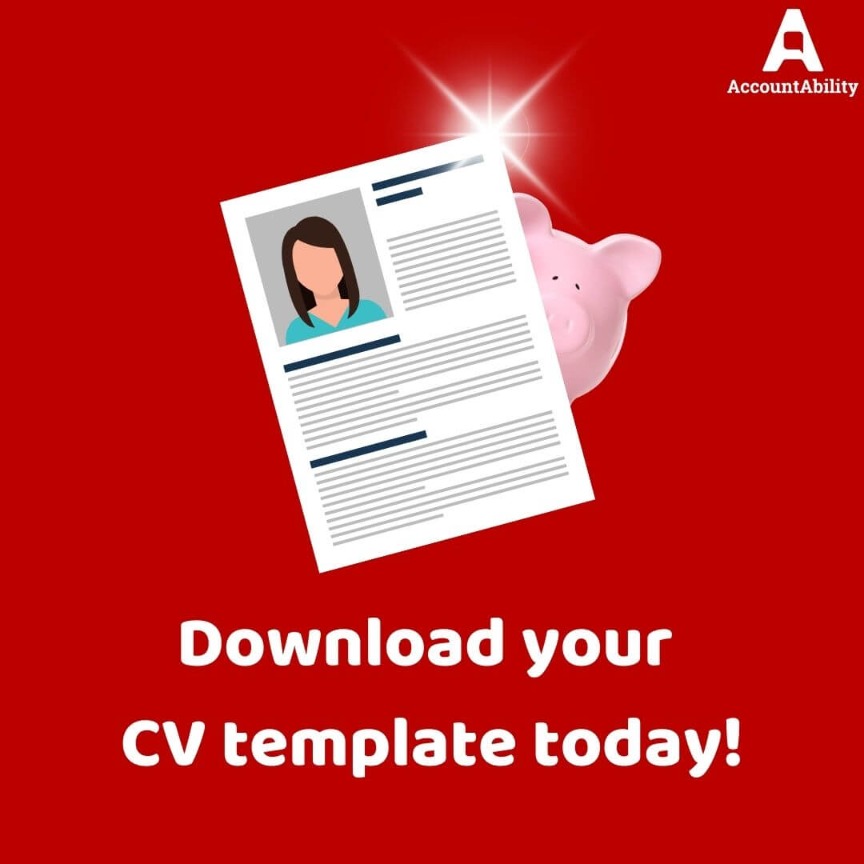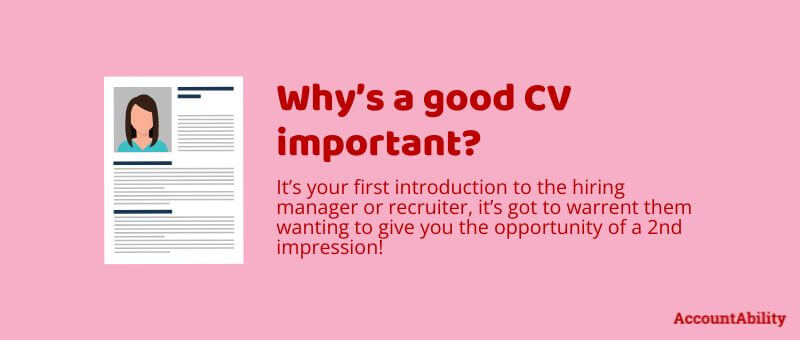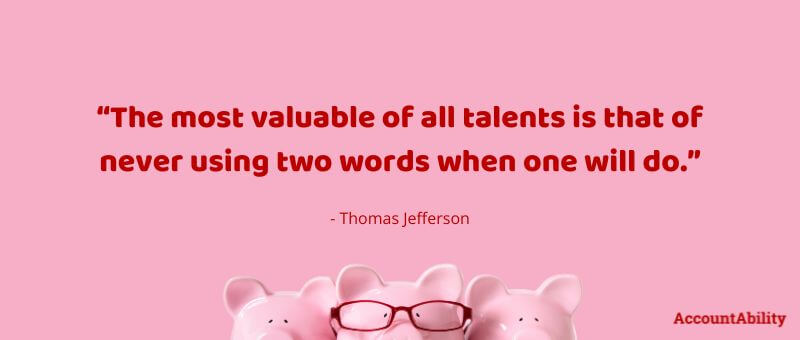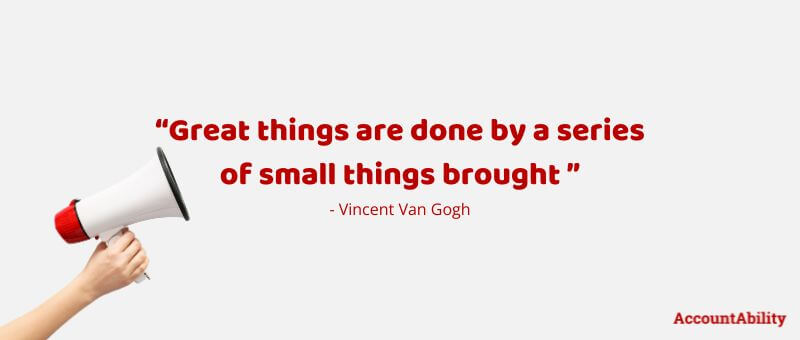A well-crafted resume in accounting or payroll is your ticket to landing your dream job. With hiring managers often spending less than 30 seconds on each resume, it's crucial to make a strong impression quickly. Here’s how you can create a standout resume that boosts your chances of success in the accounting or payroll world.
 | Download your CV template today. |
Quick links:
The importance of a good CV
Whether you're a payroll or accounting professional, your CV should be your showstopper, and we'll tell you why:
First Impressions Matter: Your CV is your first introduction to the hiring manager/recruiter, so make it count!
Boost Your Earnings: A well-constructed CV can help employers understand your value proposition, showcasing all the reasons why you’re perfect for the role.
Customisation is Key: Tailoring your CV to the role highlights that you are a strong match for the position, increasing your chances of an interview.

Common reasons for resume rejection
Understanding why resumes are often rejected can help you avoid common pitfalls:
Lack of Relevance
Poor Formatting
Typos and Errors
Too Long
Vague Achievements
Generic Objectives
Unexplained Gaps
Overuse of Jargon
Inappropriate Email Address
Irrelevant Information
Attention to detail: enhancing your resume
Paying attention to the finer details of your resume can significantly impact your chances of landing an interview. Here are some additional insights to help you refine this crucial aspect:
Tailoring your resume
Customisation: Tailor the resume template for each job application. Highlight the skills and experiences most relevant to the job you're applying for.
Keywords: Use keywords from the job description. Many companies use Applicant Tracking Systems (ATS) to screen resumes, and including relevant keywords can help your resume get noticed.
Spelling and Grammar:
Proofreading: Always proofread your resume multiple times. Consider using tools like Grammarly or asking a friend to review it. Even minor errors can suggest a lack of attention to detail.
Professional Language: Use clear and professional language. Avoid slang or overly casual expressions, as they can detract from your professionalism.
Tip: Use our glossary of power action words to make your CV more impactful.

Font and design
Keep It Short and Concise: An accounting or payroll resume should be a maximum of two pages. Only academic resumes can be longer.
Consistent Formatting: Ensure that your resume has a consistent format. Use the same font type and size throughout, and maintain uniform spacing and alignment. A clean and organised layout makes your resume more appealing. Use bullet points to break up text and make it easier to scan. Often hiring managers are short on time, and if a CV is hard to decipher it may prevent you from getting an interview.
Sections: Clearly define sections such as Education, Experience, Skills, and Achievements. This helps hiring managers quickly find the information they need.
Visual Elements: While it's important to keep the design professional, subtle use of colour or lines can help differentiate sections and make your resume stand out.
Readable Fonts: Stick to professional fonts like Arial, Calibri, or Times New Roman. Avoid overly decorative fonts that can be hard to read. Use a font size no larger than 12pt.
White Space: Use white space effectively to make your resume easy to read. Avoid cramming too much information onto the page.
Professional Email Address: cutiepie123@example.com isn’t likely to get an interview. Ensure you have an appropriate email. Your email address should be simple and professional. Ideally, it should include your name (e.g., john.doe@example.com). Avoid using nicknames or unprofessional handles.
Consistency: Ensure that your email address matches the one used on your LinkedIn profile and other professional platforms.
Honesty is crucial
Inconsistencies can raise red flags. Hiring managers are skilled at spotting inconsistencies, which are normally uncovered during the recruitment process. Here are a few ways in which inconsistencies may be uncovered in the accounting and payroll space:
You can’t do what you stated you can do.
The resume doesn’t match your LinkedIn profile.
Inconsistencies with your references.
Recruiters have large networks; they might hear a contradicting story through a previous colleague.
What should you do?
Verify Information: Double-check all dates, job titles, and responsibilities to ensure accuracy when completing the CV template. Inaccurate information can lead to misunderstandings and damage your credibility, which may be hard to recover from.
Make your CV pop
Power words to optimise your resume

The most efficient resume approach includes starting sentences with action verbs. Hiring managers or recruiters skim through lots of applications, so you have a limited time to make a winning impression. Hiring managers and recruiters are used to seeing the same old verbs; bolstering your CV template using strong action verbs helps you differentiate yourself from the pile of CVs.
Here are some examples:
Accomplished: achieved, attained, earned, contracted, handled, regulated, coordinated, headed, oversaw, administered, delegated, impacted, planned, reviewed, analysed, developed, improved, predicted, scheduled, led, produced, strengthened, evaluated, mastered, proved, supervised, consolidated, executed, orchestrated, recommended, surpassed.
Communication: addressed, developed, influenced, presented, suggested, arbitrated, directed, interpreted, promoted, synthesised, arranged, documented, lectured, publicised, translated, authored, drafted, liaised, reconciled, verbalised, collaborated, edited, mediated, recruited, wrote, corresponded, enlisted, negotiated, rewrote, delivered, formulated, persuaded.
Research: clarified, diagnosed, investigated, interpreted, surveyed, collected, discovered, interviewed, systematised, concluded, evaluated, tested, conducted, examined, modelled, constructed, extracted, organised, critiqued, formed, resolved, derived, identified, reviewed, determined, inspected, summarised.
Technical: assembled, built, engineered, installed, solved, maintained, standardised, calculated, operated, streamlined, computed, optimised, upgraded, designed, overhauled, devised, programmed, remodelled, fabricated, repaired.
Teaching: adapted, enabled, persuaded, advised, encouraged, set goals, clarified, evaluated, stimulated, coached, explained, studied, communicated, facilitated, taught, coordinated, guided, trained, demystified, informed, developed, instructed.
Quantitative: analysed, budgeted, forecasted, administered, computed, projected, allocated, developed, researched, appraised, managed, audited, marketed, balanced, maximised, minimised, calculated, planned.
Helping: assessed, enhanced, provided, assisted, expedited, referred, clarified, facilitated, rehabilitated, coached, familiarised, represented, counselled, guided, served, demonstrated, motivated, supported, diagnosed, participated, educated, proposed.
Organisation: approved, classified, expanded, operated, retrieved, systematised, accelerated, collected, gained, organised, screened, tabulated, added, compiled, gathered, prepared, selected, unified, arranged, completed, generated, processed, simplified, updated, broadened, controlled, implemented, purchased, utilised, catalogued, defined, inspected, recorded, specified, validated, centralised, dispatched, launched, reduced, steered, verified, changed, executed, monitored, reinforced, structured.
Final Review
Consistency Check: Ensure that all information is consistent across your resume, cover letter, and LinkedIn profile.
Feedback: Get feedback from mentors, colleagues, or career advisors. They can provide valuable insights and help you identify areas for improvement.
Spelling Matters: Don’t write your CV in the third person. Ensure to proofread and use tools to check your spelling and grammar.
Professional Email: It’s all about making the best impression you can. Is your email address having the impact you’re hoping for? If you’re questioning this, maybe you should change it.
By focusing on these details, you can create a polished and professional resume that effectively showcases your qualifications and makes a strong impression on hiring managers. Download our resume template to help get you started.

One last thing…
Before you send out your resume, ensure it matches your online presence! So much of the recruitment process is connected to LinkedIn, so ensure there are no inconsistencies.
By following these tips and using our CV template, we hope you can create a resume that not only stands out but also effectively showcases your qualifications and achievements. Good luck with your job search, and if you need any extra help our team of experts are always ready to help.
Further resources to help with your job search
Write the perfect Accounting Support resume
5 essential tips to make your resume stand out
A guide to partnering with recruitment · AccountAbility Recruitment
The STAR Method - Interview Technique · AccountAbility Recruitment
4 ways to master an interview in · AccountAbility Recruitment
Ace these top 10 interview questions like · AccountAbility Recruitment
Written and edited by Catherine Harris, Content Strategist, Ambition Group Australia.

